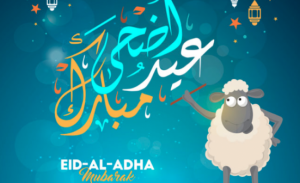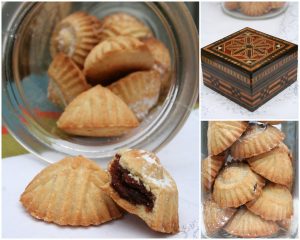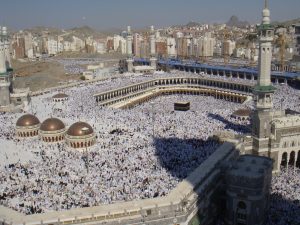Eid al-Adha - Sundown on August 11, 2019

Eid al-Adha or Eid ul Adha, (pronounced EED al-UHD-huh) is a Muslim holiday. This year it will start at sundown on Sunday, August 11. For Muslims in the Boston area, the celebration typically ends the following night. However, other traditions in the US and other countries can celebrate Eid al-Adha (also referred to as “Eid”) for longer periods of time. The average length of this celebration is four days, but some traditions celebrate up to sixteen days!
The Islamic calendar is based on the lunar cycle, so the dates each year. Eid al-Adha begins on the tenth day of the twelfth lunar month (known as Dhul-Hijjah), which starts with the sighting of the new moon. The new moon occurred on August 1 this month, so Eid is starting ten days later, on August 11.
Eid al-Adha is one of two Eids Muslims celebrate each year. Eid al-Adha is considered to be “the greater Eid” and more important than Eid al-Fitr. Eid al-Adha translates as “feast/festival of the sacrifice.” This celebration commemorates the prophet Ibrahim’s (also known as Abraham) willingness to sacrifice his son to prove his dedication to Allah (God). His son was spared when Allah provided a lamb for sacrifice instead. This day is a reminder of Ibrahim’s willingness to sacrifice something important to him for Allah. It also reminds Muslims not to put worldly possessions before Allah. In the Quran, the son who was almost sacrificed is Ismael, Ibrahim and Hagar’s son. In the Bible and Torah, the son almost sacrificed is Isaac, Abraham and Sarah’s son.
The traditional greeting on this day is “Eid Mubarak,” which means “Blessed feast/festival,” and it is how people wish each other a happy Eid. On the first morning of Eid, Muslims decorate their homes, wear their best clothes, and go to the mosque for Eid prayer. Some people stop their Eid celebration there. However, many families host or attend a gathering with traditional food. One important part of the festival is the slaughtering of one or more animals, called Qurbani. This represents the lamb that was slaughtered in Ismael’s place. Some families go to the butcher instead of slaughtering animals themselves. Regardless of how they get the slaughtered animal(s), the meat should be cut into thirds. One third is given to the poor, one third is given to family and friends, and the last third is for the family.
Most foods for Eid are based on the sacrificial meat. The meat is often used in stews, roasts, or barbecues. In Oman, lamb shuwa is popular due to its size and favor. In Morocco, tajine with plums is a standard dish because it brings sweet and savory items together. Eid al-Fitr is known as “the sweet Eid,” while Eid al-Abha is known as “the savory Eid,” and therefore has less sweets than the first Eid. In However, there are some sweets in this celebration as well. Some of the more common ones are an orange and semolina coconut cake. There’s also qatayef, which is pancake like pillow of batter, stuffed with sweet cheese and nuts. Ma’amoul is a pastry that often appears in both Eid celebrations. Ma’amoul is a cookie made using dates and nuts, that is formed into a ball.
Eid also coincides with the Hajj. The Hajj is the holy pilgrimage to Mecca. It is one of the five pillars of Islam and every able-bodies Muslim who can afford it is expected to make this pilgrimage at least once in their lifetime. The Hajj takes place between the eighth and thirteenth day of Dhul-Hijjah. In 2019, the dates are August 9 – 14. During 2018, over two million people came to Mecca for Hajj.
Teach your children about this holiday with these books:
If there's a particular celebration you or someone you know participates in that we missed, let us know by leaving a comment on this post. Or, if you think we got something wrong, please also comment and let us know. We try to be as accurate as possible, but if there's a mistake, we want to correct it.




Add a comment to: The Origins and Practices of Eid al-Adha